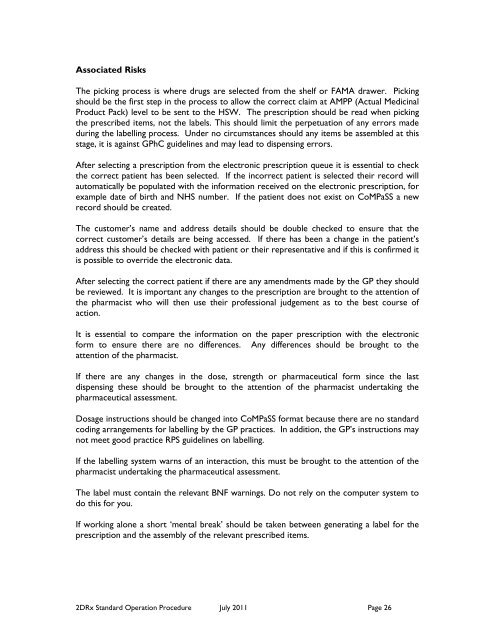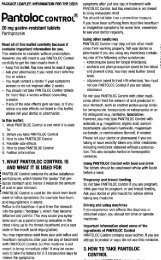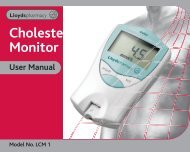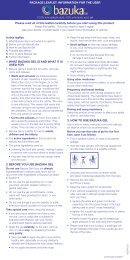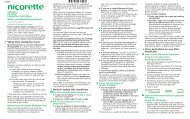2DRx SOP - LloydsPharmacy
2DRx SOP - LloydsPharmacy
2DRx SOP - LloydsPharmacy
Create successful ePaper yourself
Turn your PDF publications into a flip-book with our unique Google optimized e-Paper software.
Associated Risks<br />
The picking process is where drugs are selected from the shelf or FAMA drawer. Picking<br />
should be the first step in the process to allow the correct claim at AMPP (Actual Medicinal<br />
Product Pack) level to be sent to the HSW. The prescription should be read when picking<br />
the prescribed items, not the labels. This should limit the perpetuation of any errors made<br />
during the labelling process. Under no circumstances should any items be assembled at this<br />
stage, it is against GPhC guidelines and may lead to dispensing errors.<br />
After selecting a prescription from the electronic prescription queue it is essential to check<br />
the correct patient has been selected. If the incorrect patient is selected their record will<br />
automatically be populated with the information received on the electronic prescription, for<br />
example date of birth and NHS number. If the patient does not exist on CoMPaSS a new<br />
record should be created.<br />
The customer’s name and address details should be double checked to ensure that the<br />
correct customer’s details are being accessed. If there has been a change in the patient’s<br />
address this should be checked with patient or their representative and if this is confirmed it<br />
is possible to override the electronic data.<br />
After selecting the correct patient if there are any amendments made by the GP they should<br />
be reviewed. It is important any changes to the prescription are brought to the attention of<br />
the pharmacist who will then use their professional judgement as to the best course of<br />
action.<br />
It is essential to compare the information on the paper prescription with the electronic<br />
form to ensure there are no differences. Any differences should be brought to the<br />
attention of the pharmacist.<br />
If there are any changes in the dose, strength or pharmaceutical form since the last<br />
dispensing these should be brought to the attention of the pharmacist undertaking the<br />
pharmaceutical assessment.<br />
Dosage instructions should be changed into CoMPaSS format because there are no standard<br />
coding arrangements for labelling by the GP practices. In addition, the GP’s instructions may<br />
not meet good practice RPS guidelines on labelling.<br />
If the labelling system warns of an interaction, this must be brought to the attention of the<br />
pharmacist undertaking the pharmaceutical assessment.<br />
The label must contain the relevant BNF warnings. Do not rely on the computer system to<br />
do this for you.<br />
If working alone a short ‘mental break’ should be taken between generating a label for the<br />
prescription and the assembly of the relevant prescribed items.<br />
<strong>2DRx</strong> Standard Operation Procedure July 2011 Page 26


